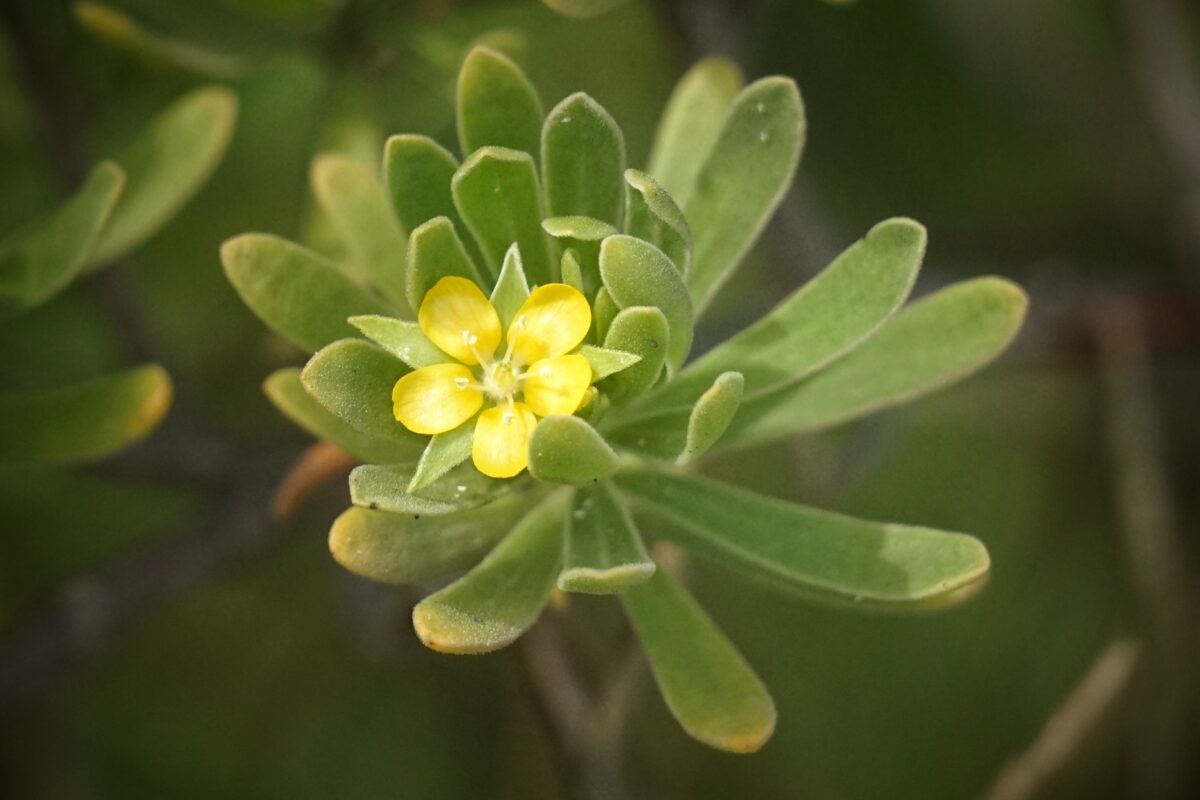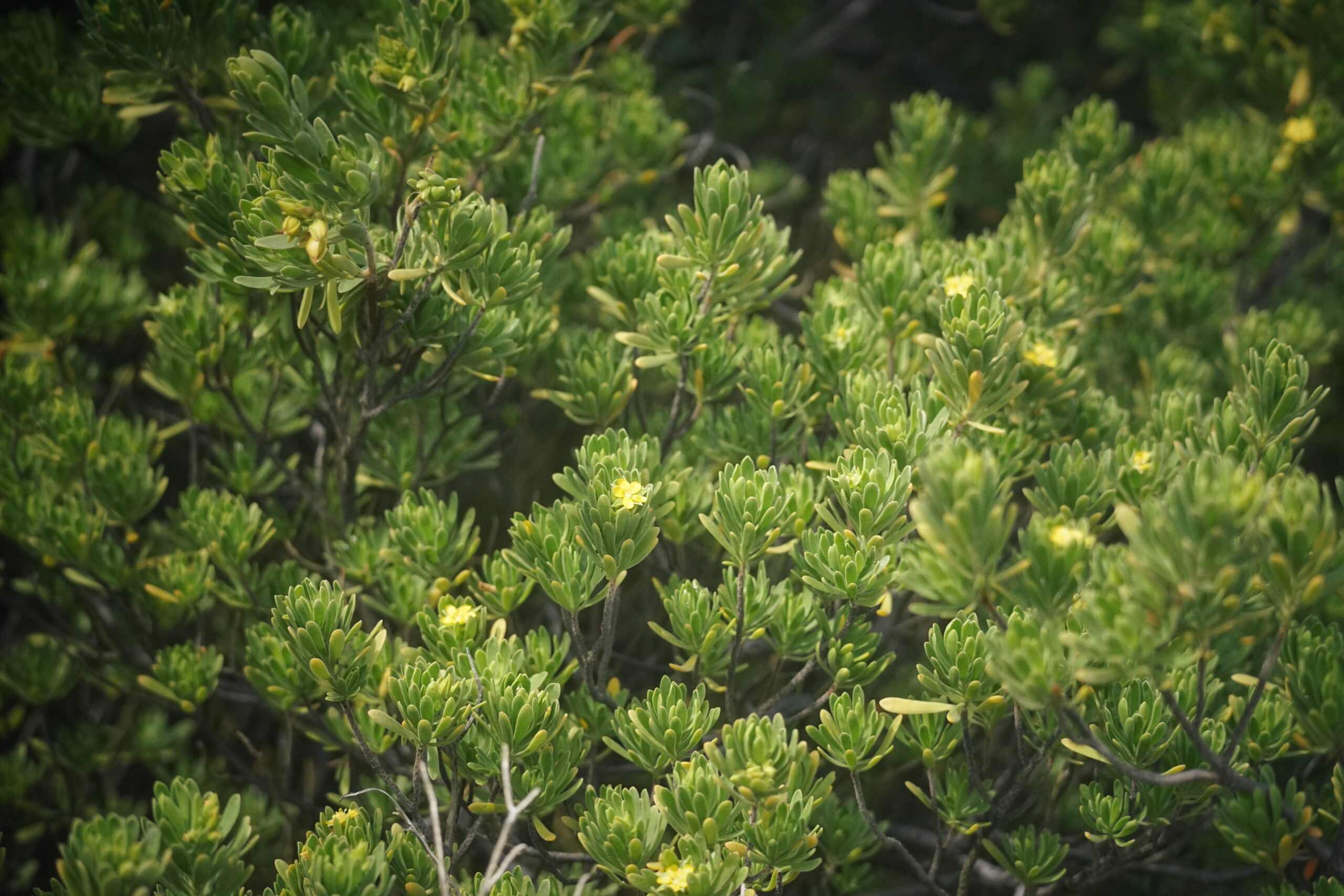Bay cedar
Pictured above: Bay cedar (Suriana maritima) by Emily Bell. Click on terms for botanical definitions. View post as a PDF.
Florida’s coastlines are home to some of our most resilient wildflowers, including Bay cedar (Suriana maritima). This evergreen shrub can be found growing along the beach dunes and into the coastal scrub in Central and South Florida. Its thickets provide protection from shoreline erosion; the small yellow flowers provide year-round nectar for numerous pollinators; and the seeds are eaten by birds. It is also a larval host to both the Martial scrub-hairstreak (Strymon martialis) and Mallow scrub-hairstreak (Strymon istapa).
Bay cedar has a sturdy branched trunk with attractive shaggy brown bark that flakes, revealing the inner light-yellow bark. The light grey-green leaves are alternately arranged and average 1-1.5 inches long. They are spatulate, fleshy and finely pubescent. The bright yellow flowers are small (about ¼ inch wide) and cup-shaped with five petals. They occur singularly or in clusters at the ends of branches.

Suriana is a monotypic genus, meaning that Bay cedar is the only species within it. It was named for French physician Joseph Donat Surian who took botanical expeditions to the West Indies in the late 1600s. The species epithet maritima comes from the Latin maritimus, meaning “pertaining to the sea,” and is descriptive of the plant’s coastal habitat.
Family: Surianaceae (Bay cedar family)
Native range: Coastal counties of Central and South Florida from Brevard to Pinellas County
To see where natural populations of Bay cedar have been vouchered, visit florida.plantatlas.usf.edu.
Hardiness: Zones 9B–11B
Lifespan: Perennial
Soil: Sandy or limestone soils
Exposure: Full sun to partial shade
Growth habit: Woody shrub averages 6–10 feet tall by 6–10 feet wide
Propagation: Seed
Garden tips: Bay cedar makes a wonderful hedge or specimen plant for coastal landscapes in Central and Southern Florida. It is evergreen, flowers year-round and is highly resistant to salt spray and hurricane force winds.
Bay cedar is available from nurseries that specialize in Florida native plants. Visit www.PlantRealFlorida.org to find a nursery in your area.
Learn more about Bay cedar from The Institute of Regional Conservation and the Florida Native Plant Society.

